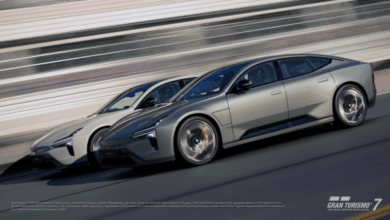Mercury Insurance Releases Total Cost of Ownership Report
The findings detail the costs to own EV, internal combustion engine & hybrid models...
Although EV operating costs are lower than internal combustion engine (ICE) and hybrid models, oftentimes the associated insurance costs can make the electric models just as expensive to own as ICE and hybrids, according to a new report from Mercury Insurance. The insurance company recommends looking at models via a total cost of ownership equation.
“The ‘total cost of ownership’ equation includes factors like insurance premiums, fuel efficiency, repair expenses and home charging infrastructure if purchasing an electric vehicle (EV), among other aspects,” said Chong Gao, director of product management R&D at Mercury Insurance. “An EV might seem appealing for its expected fuel savings and lower maintenance costs, but insurance for them is on average 20% higher compared with an ICE vehicle, and they are typically more expensive to insure versus hybrids. However, as more people adopt EVs and insurance companies gather more data in the future, their insurance costs will likely even out.”

When deciding between an ICE vehicle, hybrid or EV, here are some important distinctions the insurance company recommends buyers should consider:
In terms of charging EVs, the Department of Energy reports that about 80% of all charging is done at home, which J.D. Power notes is the ultimate convenience and most satisfying aspect of EV ownership. Consumers should be aware that they will need to consult an electrician to install a Level 2 charger, but some states and localities offer incentives to help cover the cost. Consumers should also be aware that satisfaction with public EV charging overall is still poor.
When it comes to maintenance for ICE and hybrid vehicles, there are several upkeep items that can add to the cost of ownership over time, such as air filters and oil changes. Both require similar maintenance schedules and incur comparable costs. One notable exception is that a hybrid’s battery will eventually need replacement, which can be costly, but United States law requires that all hybrids come with battery warranties of at least eight years or 100,000 miles.
EVs, on the other hand, do not need many routine services as they lack an internal combustion engine, pistons, valves and moving parts. This can result in lower routine repair and maintenance costs compared with ICE and hybrid vehicles, but J.D. Power reports that EV owners replace tires more frequently than others. Like hybrids, the EV battery will also need to be replaced down the road, but all new EVs come with a generous battery warranty.
While EVs may offer a number of advantages in terms of reduced maintenance and fueling costs, the cost of insurance might offset these potential savings. “EVs cost more to insure versus their ICE counterparts because they generally cost more to buy, and consequently more to repair or replace,” said Stephen Crewdson, senior director of insurance business intelligence at J.D. Power. “Today’s EVs have fewer moving parts, but it can be costly when they need replacement. Plus, there aren’t as many repair shops with technicians trained to work on EVs, which means these facilities can charge more for the specialized knowledge they provide.”
“The best vehicle type for a particular consumer will ultimately come down to budget, lifestyle factors and personal preference. Hybrids serve as a great bridge between ICE and EVs by offering fuel efficiency and a reduced carbon footprint for consumers who aren’t yet ready to make the leap to an EV,” said Gao.



